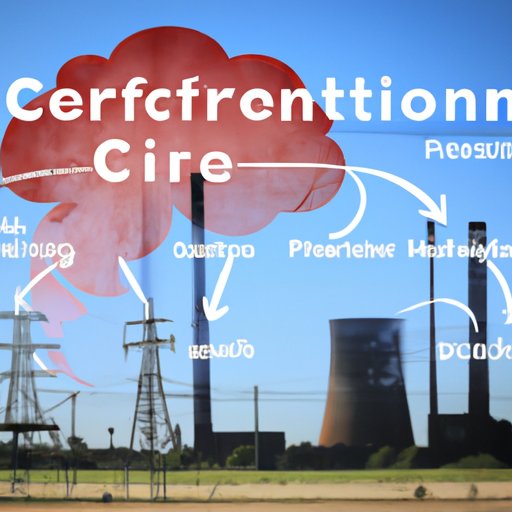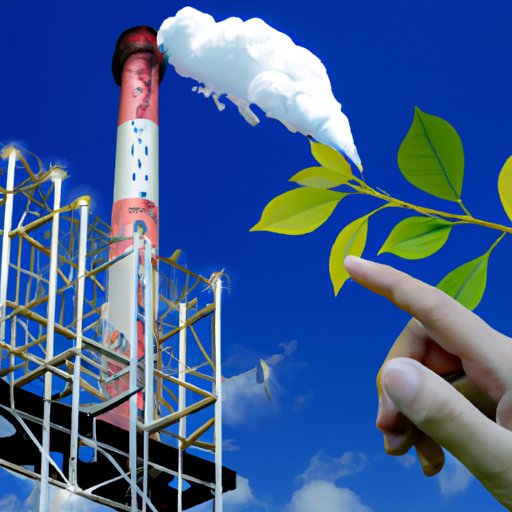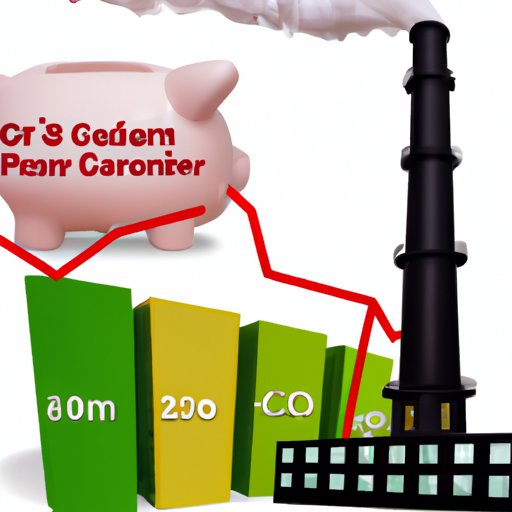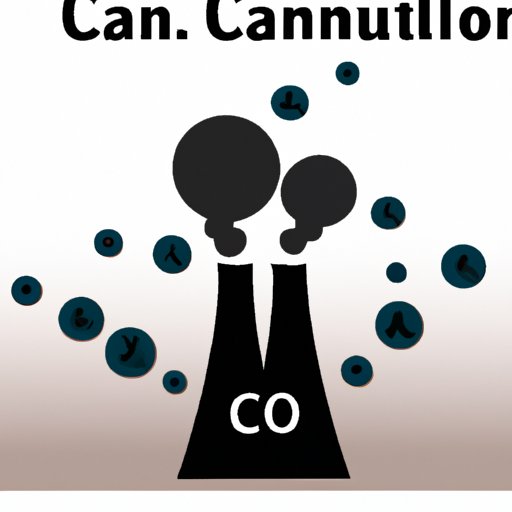Introduction
Carbon capture is a process that captures carbon dioxide (CO2) from various sources such as power plants and industrial processes. The CO2 is then stored or used in other ways so that it does not enter the atmosphere. This technology has become increasingly important in recent years due to the growing concern over climate change. In this article, we will explore how carbon capture works, the different types of carbon capture technologies, the challenges and opportunities associated with carbon capture, and the benefits of using this technology.
Explaining the Basics of Carbon Capture Technologies
Carbon capture technologies are used to capture CO2 from different sources. These sources can include stationary sources such as power plants, industrial processes, and cement production, as well as mobile sources such as cars and planes. The captured CO2 can then be stored underground, used in other products, or converted into a usable form of energy.
There are several different types of carbon capture technologies available. These include direct air capture, enhanced oil recovery, post-combustion capture, and pre-combustion capture. Each of these methods has its own set of advantages and disadvantages. For example, direct air capture is more expensive than other methods, but it can be used to capture CO2 from a variety of sources. Enhanced oil recovery is typically cheaper than other methods, but it only works with certain types of fuel sources. Post-combustion capture and pre-combustion capture both involve capturing CO2 from exhaust gases, but they differ in terms of efficiency and cost.
The process of carbon capture involves trapping the CO2 molecules before they are released into the atmosphere. This is done by passing the exhaust gases through a filter that contains an absorbent material. The absorbent material binds to the CO2 molecules and traps them in the filter. The filtered gases can then be stored or used in other ways.

Examining the Challenges and Opportunities for Carbon Capture
When considering the use of carbon capture technology, there are several environmental, economic, and social considerations that must be taken into account. On the environmental side, the most important consideration is the potential impact on climate change. Carbon capture technologies have the potential to reduce greenhouse gas emissions, which can help mitigate the effects of climate change. However, there are still some environmental concerns, such as the potential for leakage of the captured CO2.
From an economic standpoint, carbon capture technologies can be expensive to implement. There are initial investment costs, research and development costs, and operational and maintenance costs associated with these technologies. Additionally, there is the potential for carbon capture to disrupt existing markets, such as those related to fossil fuels. Finally, from a social standpoint, there are potential ethical issues to consider when implementing carbon capture technologies, such as the potential for unequal access to the benefits of carbon capture.
Reviewing Different Types of Carbon Capture Systems
Direct air capture is one type of carbon capture system. This method uses machines that suck in air and filter out the CO2 molecules. The CO2 molecules are then stored underground or used in other products. This technology is expensive, but it can be used to capture CO2 from a variety of sources.
Enhanced oil recovery is another type of carbon capture system. This method pumps CO2 into existing oil fields to increase the amount of oil that can be extracted. This method is generally cheaper than other methods, but it is limited to oil fields that contain certain types of fuel sources.
Post-combustion capture and pre-combustion capture are two other types of carbon capture systems. Post-combustion capture involves capturing CO2 from exhaust gases after combustion has occurred. Pre-combustion capture involves capturing CO2 from exhaust gases before combustion has occurred. Both of these methods involve filtering the exhaust gases, but they differ in terms of efficiency and cost.

Exploring the Benefits of Carbon Capture
Carbon capture technologies can have a number of benefits for the environment, economy, and society. One of the primary benefits is the potential to reduce greenhouse gas emissions. By capturing and storing CO2, we can reduce the amount of CO2 that is released into the atmosphere. This can help slow down the rate of global warming and climate change.
In addition to reducing emissions, carbon capture technologies can also enhance energy efficiency. By capturing CO2 before it is released into the atmosphere, we can reduce the amount of energy needed to produce electricity or other products. This can lead to lower energy costs and increased energy efficiency.
Finally, carbon capture technologies can help support the growth of renewable energy sources. By capturing and storing CO2, we can reduce the amount of CO2 that is produced by burning fossil fuels. This can create more space for renewable energy sources to grow and provide a cleaner, more sustainable energy future.

Investigating the Costs of Carbon Capture Technologies
Carbon capture technologies can be expensive to implement. There are initial investment costs, research and development costs, and operational and maintenance costs associated with these technologies. Additionally, there are potential market disruptions to consider, such as those related to fossil fuels. Ultimately, the cost of carbon capture technologies depends on the specific type of technology being implemented and the source of the CO2 being captured.
Conclusion
Carbon capture technologies offer an important solution for reducing greenhouse gas emissions and mitigating climate change. These technologies involve capturing CO2 from various sources and then storing or using it in other ways. There are several different types of carbon capture technologies available, each with its own set of advantages and disadvantages. While carbon capture technologies can be expensive to implement, they can bring a number of benefits, including reduced emissions, enhanced energy efficiency, and support for renewable energy sources. As the world continues to grapple with the challenges of climate change, carbon capture technologies will become increasingly important.
(Note: Is this article not meeting your expectations? Do you have knowledge or insights to share? Unlock new opportunities and expand your reach by joining our authors team. Click Registration to join us and share your expertise with our readers.)
